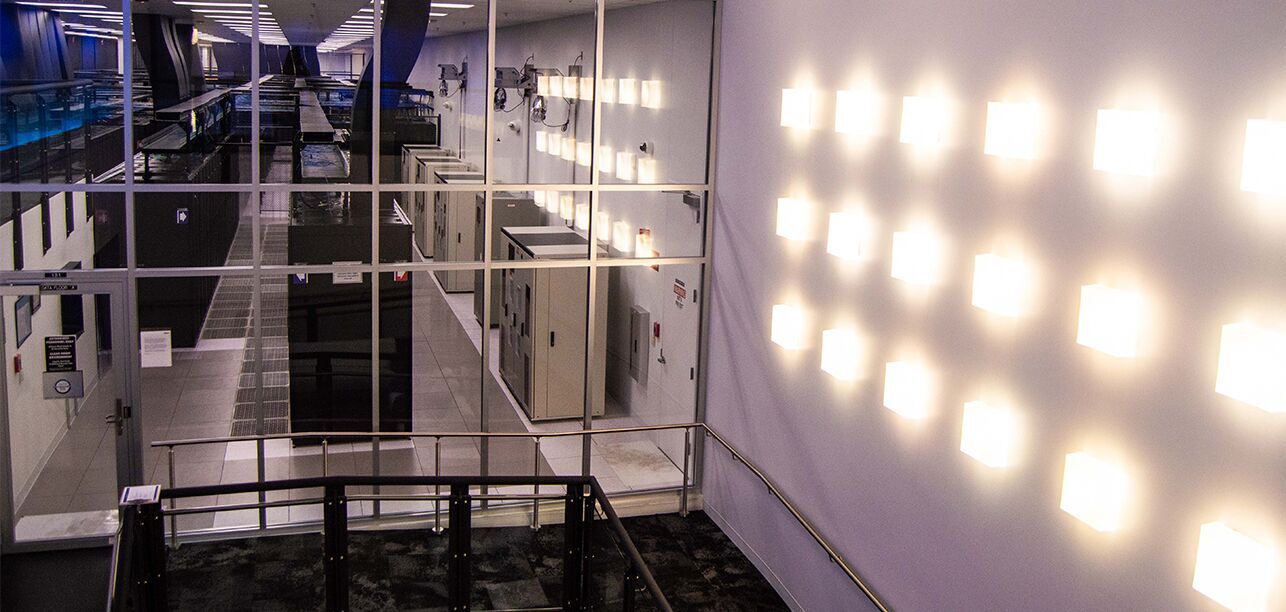
Q&A: Expanding on a Live Data Center With Executive Construction Inc.
INAP recently completed the expansion of our Dallas data center, one of our flagship facilities. The Tier 3-type facility now has over 30,000 square feet of data center white space and 6 megawatts of power. We partnered with Executive Construction Inc. for the build, and they were also a key sponsor for the grand opening event. I sat down with Rob Daly, Vice President and Director of Field Operations, to discuss the ins and outs of mission-critical builds, the unique challenges of expanding on a live data center and why finding the right partner makes all the difference.
Ryan: Executive Construction recently partnered with INAP on the expansion of our flagship data center in Dallas, and we celebrated the grand opening together in May. At a high level, how did this expansion project go?
Rob: It went very smoothly—there was nothing unexpected. From a constructability and availability of equipment standpoint, everything fell into place nicely. Despite some of the equipment lead times being extended, we collaborated as a team to creatively come up with a different approach for certain installations to still deliver the project on-time.
From your perspective, what are some of the features of this data center that will stand out to prospective tenants?
First, your staff there is extremely knowledgeable. They’re available and at the ready for any of your customers that come in there. You see that interaction daily. Second, the site is extremely clean. And third, of course, the security of your site is also important. That’s a big thing that a lot of customers are super sensitive about: the security of their information.
As a well-designed Tier 3-type facility with N+1 requirements, I think the greatest feature of the Dallas site is that there’s room for expansion, so your customers can also grow. To know that the facility has space potential beyond what’s actually there right now is important. Customers that are either experiencing rapid growth—or strategically planning for it in the coming years—don’t want to have to put cabinets in another data center two miles down the road. They want the ease and convenience of one facility. Having the ability to grow with INAP is a big differentiator.
For those who may not be familiar with your industry and line of work, could you define what constitutes a mission-critical project? And what are some of the biggest challenges associated with something like data center construction?
That’s any project where 24/7/365 business continuity is vital to the organization and the customers they host. With a Tier 3-type data center, customers expect limited to no impact maintenance with zero downtime so their services are never interrupted.
In terms of challenges, speed-to-market is often the most important factor in facility construction, so these are always fast-paced projects. Typically, our colocation data center partners have potential tenants under contract that are anxious for the space. This means the sooner we get the facility up and running, the sooner our clients capture revenue. We push hard to deliver ahead of schedule for that reason but also because we know that our clients have clients of their own, and we want to support their customer service expectations.
The other aspect we carefully plan for is equipment coordination. Often, the data center company decides to purchase the equipment themselves. However, equipment is such a critical component of any build that we help manage that process with the owner. We align purchasing lead-times—particularly of long-lead items like chillers or generators—with our construction schedule to ensure all stakeholders are on the same page about the equipment specs ordered and when specific pieces need to arrive on-site. We’ve had the most success with identifying the key milestone dates and then proactively connecting on a regular basis with manufacturers on equipment status to avoid any impact on the sequence of work.
Our Dallas facility is a live site, meaning the expansion couldn’t interrupt the normal operations of the data center. With projects like this, what are the extra considerations you have to take?
One of the valuable things about partnering with us is that when we’re doing your builds, we’re always focused on serving you and your customers. Taking logistics and sequence of work into account, we want to make sure we don’t paint ourselves into a corner.
We need to make it safe and feasible for us to go back in and continue downstream expansions without impacting current customers. When it’s an existing, live data center, it’s a clean room free from dust and other contaminants. We go through an extensive method of procedure (MOP) process for every critical activity. Even activities that most would define as non-critical, we prefer to treat them as critical. Our team wants to make sure we follow the right processes to eliminate any risk whatsoever.
Throughout the MOP process, we identify every single step, even the most minor details, like what tools we’ll use when working on specific switch gear, and then do a tool count. There’s also a pre-huddle meeting with every on-site team member. We go through the process, execute it and at the completion of the MOP, we go through it to make sure we’ve checked all the boxes, that everything was done, and the activity is complete.
When it comes to data center builds, what trends do you think will define this kind of project over the next decade? And what kind of challenges will persist?
There’s definitely a lot of growth in the data center space right now—it’s a booming market. More and more, people are entrusting their data management to professional firms like INAP because managing their own data centers is no longer a viable capital investment. One, it’s added real estate that now they can’t use for office space or other uses; and two, if they maintain data on-site, they’ve got to hire and retain the appropriate staff to manage that data center and keep it up and running. And with demand for cloud growing the way it is, the easy addition of managed cloud services and cloud connectivity to colo services only adds to the appeal.
But real estate must also factor in the equipment. There’s so much equipment required to be a Tier 3-type facility, since you have your N+1 or 2N requirements. For redundancy purposes, you double up on equipment, which makes the footprint and the cost that goes along with it a lot larger. And of course, a data center requires significant mechanical and electrical infrastructure, which is costly to purchase, maintain and eventually replace. In the 20-plus years we’ve been building mission-critical facilities throughout the country, we have seen a continued increase in the number of companies that opt to push those services to colocation facilities, which makes a lot of sense. It’s going to continue to boom.
At INAP, we take a lot of pride in selecting partners that share our devotion to performance and reliability. From Executive Construction’s perspective, when meeting with a new prospect, what sets your company apart in terms of data center builds or mission-critical builds in general?
We’re not looking to be a one-and-done contractor. With each engagement, we work to create a trusting, lasting partnership. It’s one of the aspects of our relationship with the INAP team that I’ve personally valued the most. Whether we’re in contract negotiations, providing conceptual budget assistance to vet building sites, or in the middle of a build’s hectic final week, we take our role as our client’s partner seriously. We like to prove that collaboration is in our DNA, so we work hard to ensure any decision or outcome makes sense for all parties involved. We also pride ourselves on our integrity—doing what we say we’re going to do.
We’ve seen success in the construction industry by focusing on reputation and relationships. A number of mission-critical clients have brought us with them across the country. These partners have a national reach and in different geographic markets, they say to us, “You’re a trusted partner, and we’ve got a new opportunity—come with us.” Maybe our role isn’t general contractor; maybe we’re serving as their advocate to make sure the right contractors are on board and holding them to the same standard we hold ourselves to, and that our clients have gotten used to. I think the fact our clients and design partners see us in that way speaks volumes.



